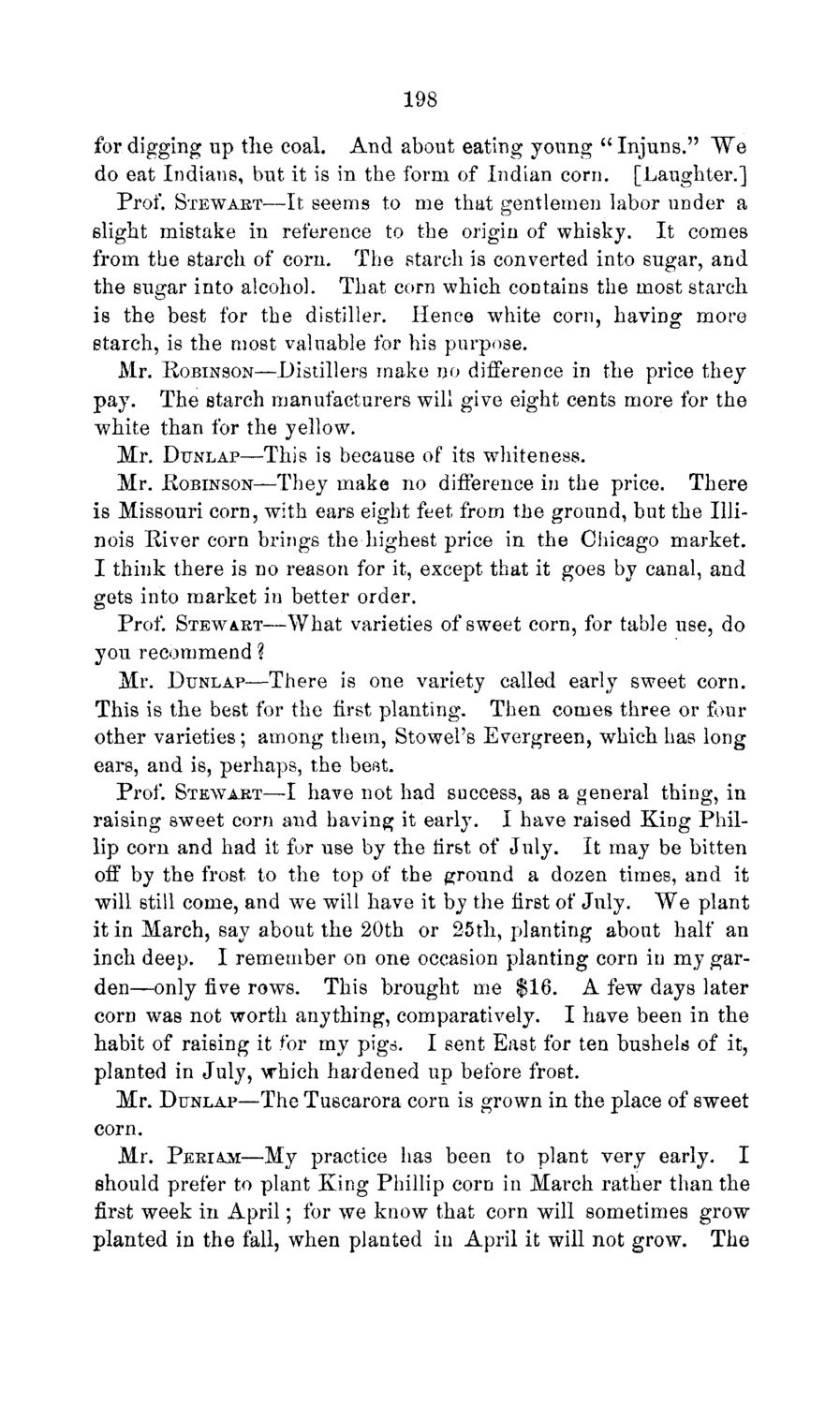| |
| |
Caption: Board of Trustees Minutes - 1869
This is a reduced-resolution page image for fast online browsing.

EXTRACTED TEXT FROM PAGE:
198 for digging up the coal. And about eating young " Injuns." W e do eat Indians, but it is in the form of Indian corn. [Laughter.] Prof. STEWART—It seems to me that gentlemen labor under a slight mistake in reference to the origin of whisky. It comes from the starch of corn. The starch is converted into sugar, and the sugar into alcohol. That corn which contains the most starch is the best for the distiller. Hence white corn, having more starch, is the most valuable for his purpose. Mr. ROBINSON—Distillers make no difference in the price they pay. The starch manufacturers will give eight cents more for the white than for the yellow. Mr. DUNLAP—This is because of its whiteness. Mr. ROBINSON—They make no difference in the price. There is Missouri corn, with ears eight feet from the ground, but the Illinois River corn brings the highest price in the Chicago market. I think there is no reason for it, except that it goes by canal, and gets into market in better order. Prof. STEWART—What varieties of sweet corn, for table use, do you recommend ? Mr. DUNLAP—There is one variety called early sweet corn. This is the best for the first planting. Then comes three or four other varieties; among them, Stowel's Evergreen, which has long ears, and is, perhaps, the best. Prof. STEWART—I have not had success, as a general thing, in raising sweet corn and having it early. I have raised King Phillip corn and had it for use by the first of July. It may be bitten off by the frost to the top of the ground a dozen times, and it will still come, and we will have it by the first of July. We plant it in March, say about the 20th or 25th, planting about half an inch deep. I remember on one occasion planting corn in my garden—only five rows. This brought me $16. A few days later corn was not worth anything, comparatively. I have been in the habit of raising it for my pigs. I sent East for ten bushels of it, planted in July, which hardened up before frost. Mr. DUNLAP—The Tuscarora corn is grown in the place of sweet corn. Mr. P E R I AM—My practice has been to plant very early. I should prefer to plant King Phillip corn in March rather than the first week in April; for we know that corn will sometimes grow planted in the fall, when planted in April it will not grow. The
| |